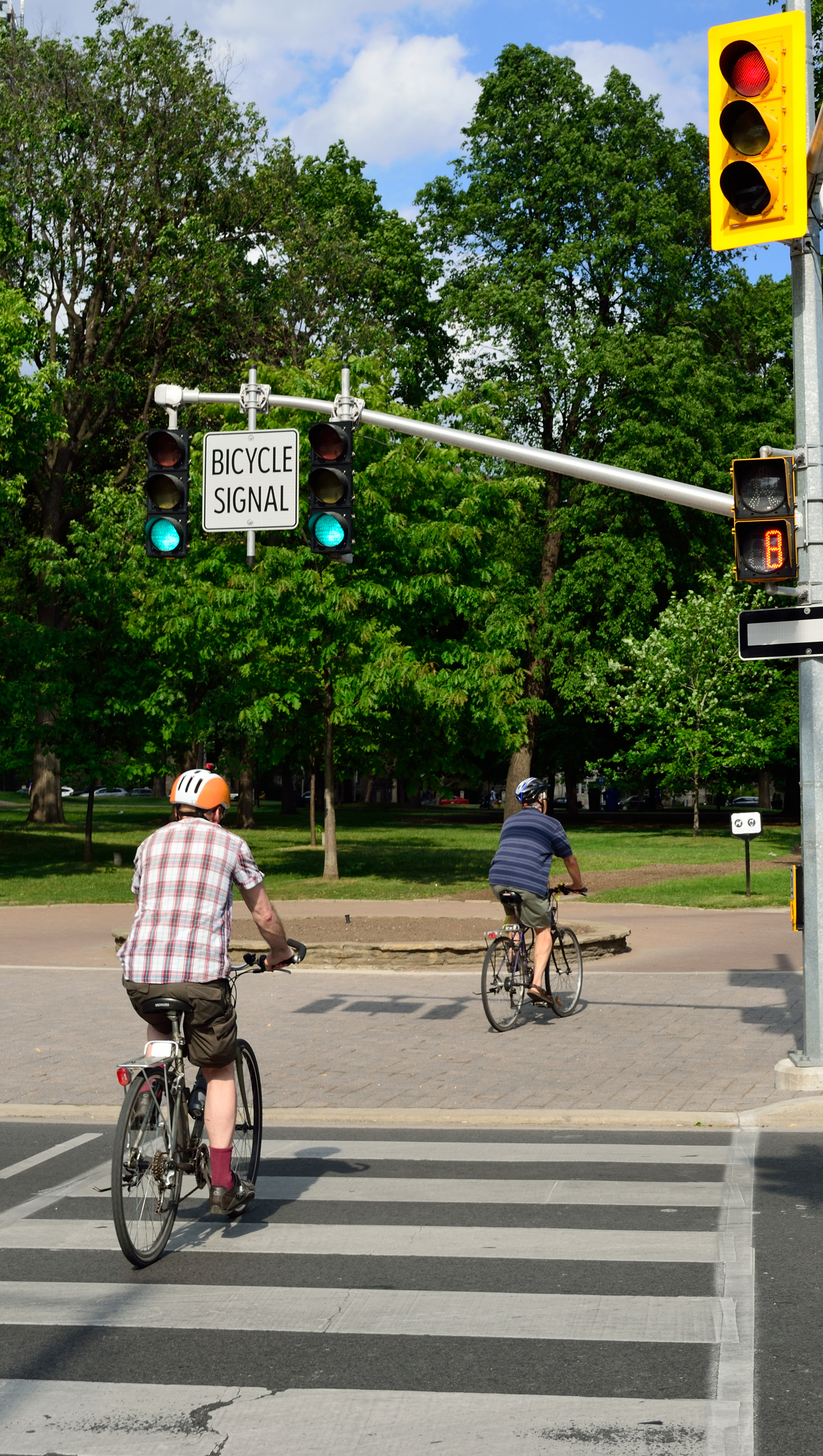 Raysonho via Wikimedia
Raysonho via Wikimedia The National Highway Traffic Safety Administration, in its annual report about traffic fatalities across the U.S., estimated 39,345 people perished in motor vehicle accidents in 2024 – a 3.8% drop from the year before.
One potential contributor to this decrease is greater implementation of the proven safety countermeasures recommended by the Federal Highway Administration’s Office of Safety, including medians and pedestrian refuge areas, bicycle lanes, and dedicated right/left turn lanes at intersections.
Further reading:
- 7 design insights for safe bicycle transportation from the experts
- A traffic engineer’s charge to aspiring engineers: Be curious
- Stuck at an intersection? You may need a ‘leading pedestrian interval’ for safety
Yet many cities, suburbs, and communities face challenges as they seek to make these kinds of roadway safety investments. As noted in a 2025 FHWA report, Implementation of Federal Highway Administration Proven Safety Countermeasures, many state and local departments of transportation struggle with adequate funding, staffing issues, or regulatory barriers.
“Nationally, we are concerned about why we have so many roadway fatalities as well as related fatalities of bikers or pedestrians who are not even in the vehicle,” said Carol Lewis, Ph.D., director of the Center for Transportation, Training, and Research at Texas Southern University. “As a result, the FWHA, as well as transportation research boards and departments of transportation, have been looking into what we can do to help more communities figure out how to put in these countermeasures we know will help save lives.”
Involving the community
While the FHWA report does include several case studies to help provide guidance for local agencies looking for ways to better manage speed management, roadway departure, cross-cutting, and pedestrian/bicyclist issues, the city of Amarillo, Texas, has found success by going straight to local community members not only for support but also for direction. Shari Kendall, community engagement manager with Amarillo’s planning department, said it made all the difference as the city considered new roadway safety projects.
“Some of these countermeasures have been around for a long time, but you still need to figure out how to get them implemented,” said Kendall. “How do you convince the street department? The traffic department? All the other stakeholders that you need to go through, all the way up to the city council?”
After receiving a U.S. DOT Safe Streets and Roads for All planning grant, the city engaged the Goodman Corp., a consulting firm that provides planning, engineering, and policy expertise for infrastructure projects, to help it take a deeper look at crash data – and identify the places where there would be the most value from implementing safety countermeasures.
“They helped us look at things a different way,” Kendall said. “They provided us not only with a crash density map but several high-injury network maps that included information not just about car accidents but places on the map that affected vulnerable roadway users like pedestrians.”
With that data in hand, the next step, Kendall said, was to get community buy-in. Yige “Eagle” Tang, a senior associate at Goodman, said that simple crash data can only take you so far with great needs and limited budgets. You need local input to really understand which intersections and roadways cause the most friction with citizens.
“There are a lot of new developments, new medium-sized and small-sized communities within the city,” she explained. “The city is growing and has new roadways every month. So having feedback from community members, who use these roadways every single day, can let us know where the people who actually live in the city see the greatest safety risks. … We can put all that data together to propose projects that are not only feasible but wanted.”
Kendall said that having citizens focus “on their own little part of Amarillo” provided invaluable information as she and her colleagues made their plan to improve roadway safety. She went to more than 40 community events across the city with a local map in hand to ask for targeted input. And, in doing so, she gathered close to 5,000 specific community comments about desired safety countermeasures.
Safety first
“It’s easy for people to say, ‘This is my neighborhood. I know where kids are walking or biking to school. I know where there are crossing problems or concerning intersections,’” she said. “It allowed people to ask questions about the different countermeasures and what they can do. It also gave people a strong sense of ownership over their communities and (of) how to make those communities safer.”
When city officials integrated the community comments with all the historical crash data, they identified 16 actionable projects.
“Layering all this information helps us understand the best places to put in safety countermeasures. From there, you can get a baseline cost estimate and start pursuing grants,” Kendall said. “And because we had so much community participation, our city council felt like we already had the community approval to move forward. We could get everybody on board so we could move forward.”
Amarillo now has funding to put in speed management countermeasures around five schools. Once those projects are complete, Kendall plans to go right back to community members to get their feedback.
“If it works the way it should – and data comes back that tells us, yes, kids, parents, and teachers feel safer; yes, we have fewer accidents; and yes, fewer speeding issues – we can take that success and do the same thing in other places,” she said.
Lewis said Amarillo is a good example of how focusing on community can help local and city DOTs overcome several of the barriers outlined in the FHWA report, from funding to getting buy-in from local governments and other stakeholders to get projects up and running.
“There are so many obstacles to overcome and a lot to think about with planning how to use proven safety countermeasures,” she said. “So often, you get a pilot project up and running, and then everyone’s attention is somewhere else. But when you can engage the community and better understand how people move around in your city, you can invest in projects that make a difference.”



